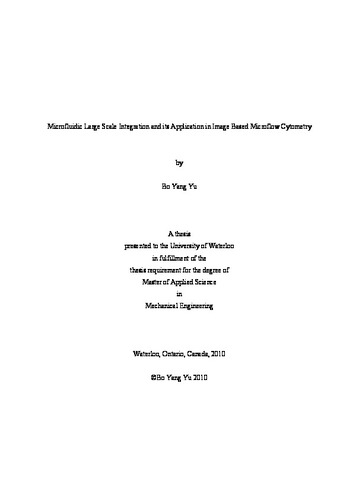| dc.description.abstract | An intelligent image processing algorithm is designed to automatically classify microscopic images of yeast cells in a microfluidic channel environment. The development process used stationary cell images as training data. The images are enhanced to reduce background noise, and a robust segmentation algorithm is developed to extract geometrical features including compactness, axis ratio, and bud size. The features are then used for classification, and the accuracies of various machine-learning classification algorithms are compared. The linear support vector machine, distance-based classification, and k-nearest-neighbour algorithm were the classifiers used. The performance variations of the system under various illumination and focusing conditions are also tested. The results suggest it is possible to automatically classify yeast cells based on their morphological characteristics with noisy and low-contrast images.
A micro fabricated cell sorter chip is then designed for the purpose of cell sorting using the above mentioned algorithm. A review of existing cytometry techniques is conducted to justify the choices of detection and flow control technologies. Then the chip structure is designed. Experiments are conducted with different channel dimensions and chip layouts to optimize the fabrication process and sample focusing performances, a sorting simulation is conducted using fluorescent beads to optimize the detection system parameters and verify the sorting accuracy. A cell counting experiment is also performed, the system was able to detect and classify cells with very high accuracy, with a throughput of 1.5 cells per second. Due to equipment and time limitation, cell sorting was not verified.
This thesis project shows the goal of implementing mLSI at Waterloo Microfluidic Laboratory was successfully achieved, and imaging detection and mLSI can be used to produce a cell sorter capable of detecting and classifying yeast cells in different cell cycle phases. Recommendations are made at the end for improvements in the mLSI system, and the application of the cell sorter in detecting protein factors in budding yeast cells. | en |

